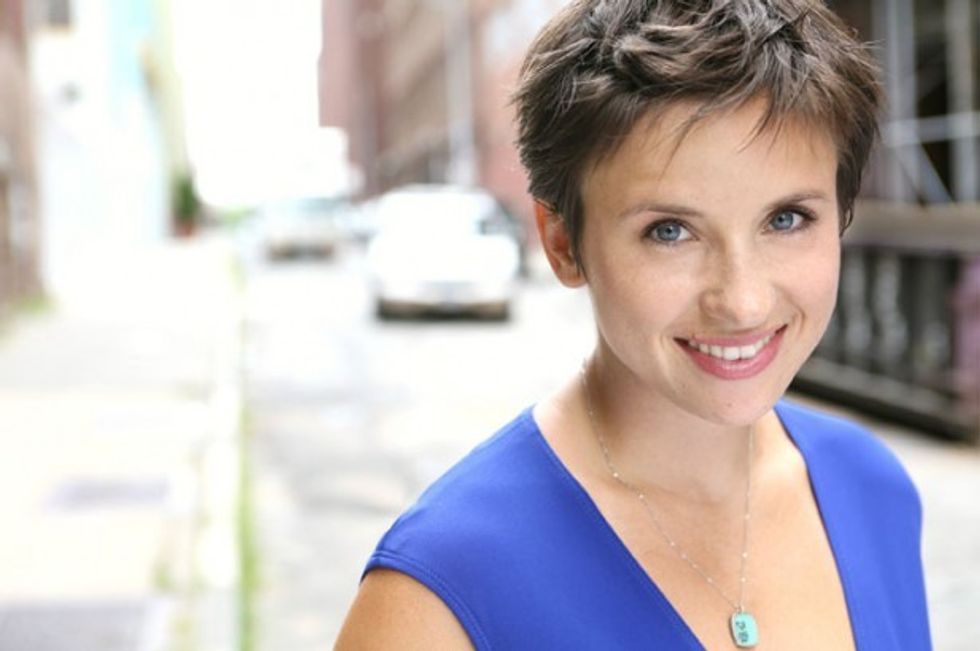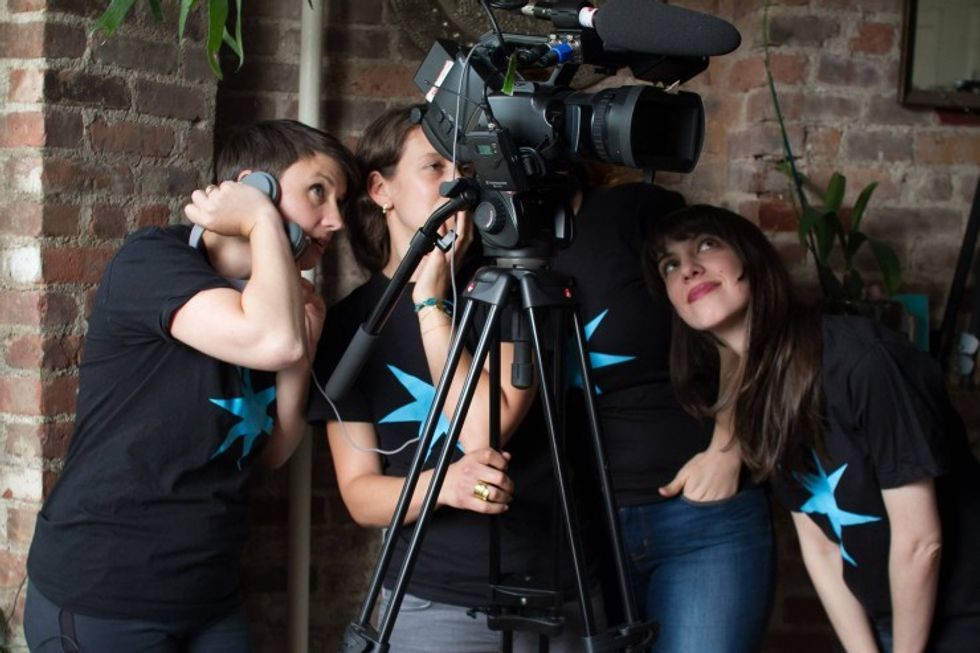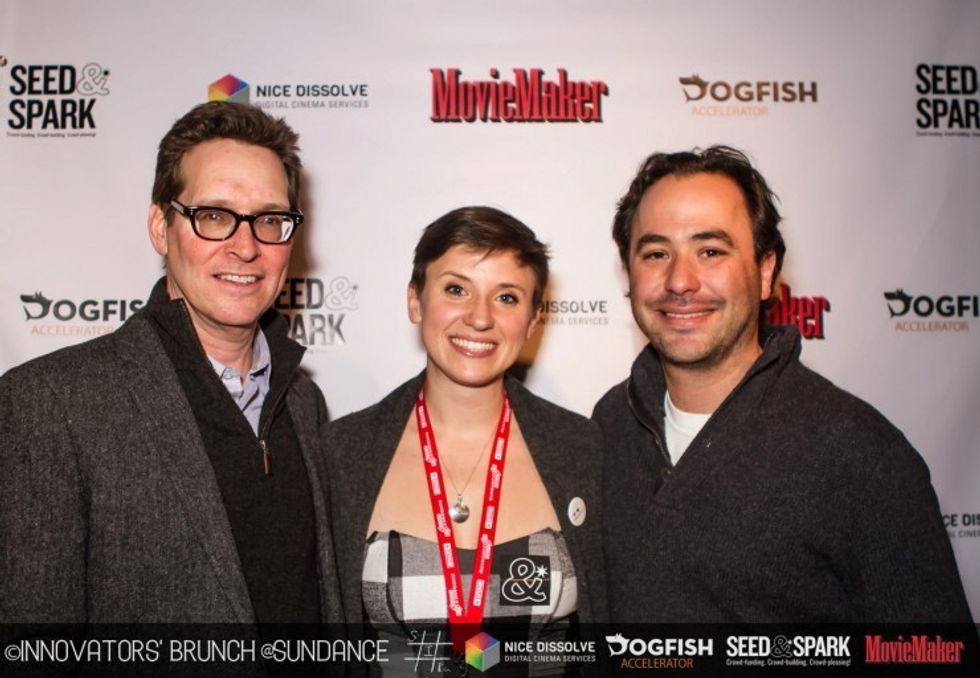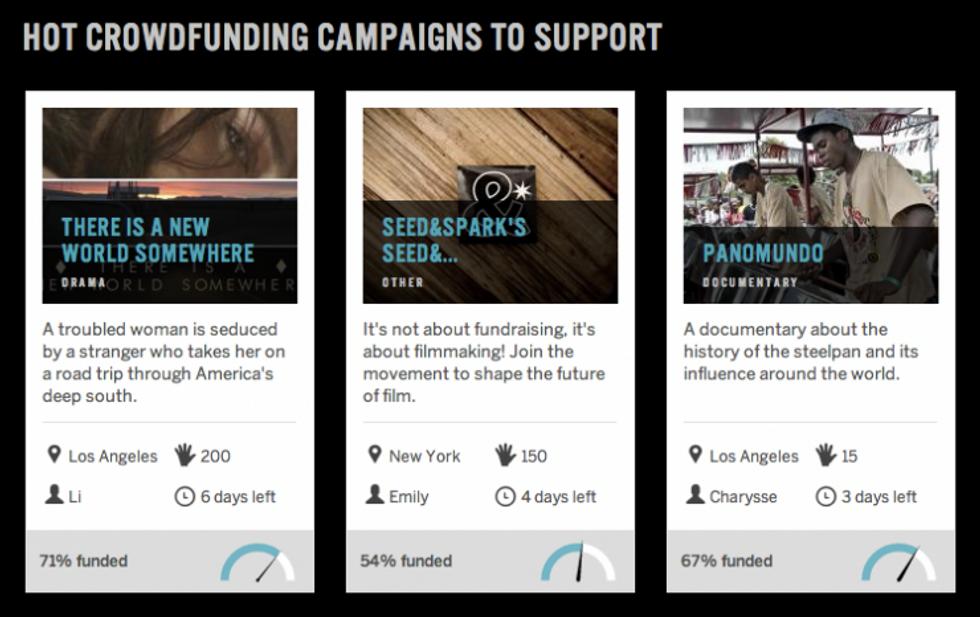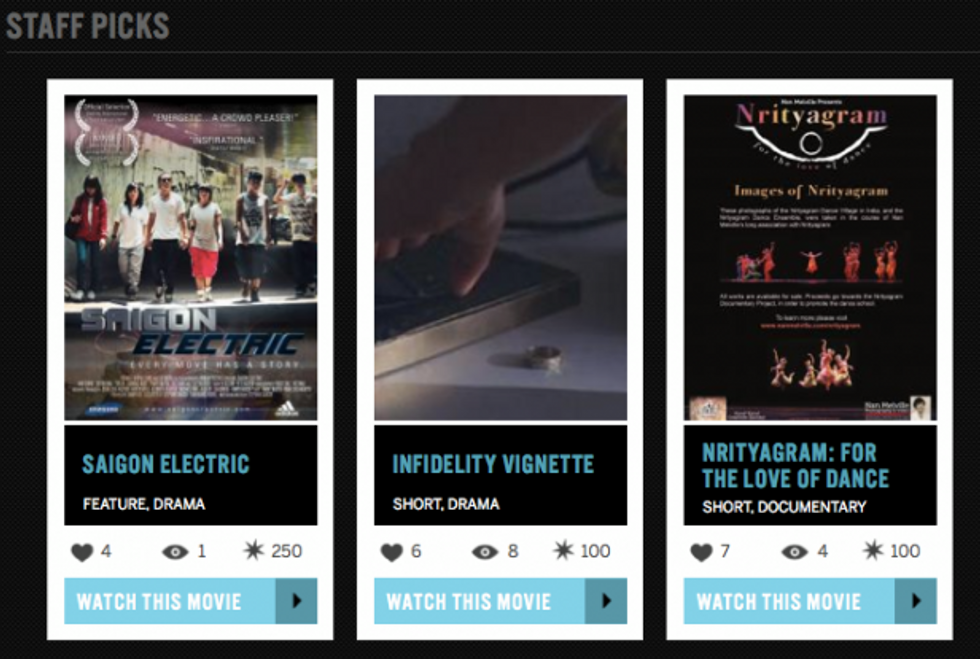One-Stop Shop for Filmmaking: An Interview with Seed&Spark Founder Emily Best
Seed&Spark Founder Emily Best was fundraising for a feature film when she had a moment to which most producers can relate. In an industry with over 15,000 independent films made each year, where only 1% of US releases get picked up for traditional distribution and only a fraction of those actually make any money -- where do we draw the line between independent and idiotic? Even after successfully green-lighting a film, getting a full house to watch it can be like extracting teeth if it doesn't feature zombies or Ryan Gosling. Best decided to put two problems together to create a solution for all filmmakers in the form of Seed&Spark, a new crowdfunding and digital distribution model that puts audiences center-stage in the filmmaking process, rallying supporters to engage beyond the usual credit card transaction. Read on for Seed&Spark 101.
Now, we know NFS readers have seen a lot of new "digital revolution" platforms popping up lately, and after a while it can be hard to tell the difference between Indiegogo and Kickstarter, much less all the new kids on the block. So, we thought we would format this interview a little differently. Best tells us about Seed&Spark and explains how the platform is different from all its competitors.
NFS: Let's start with Seed and Spark 101. Give us the elevator pitch.
EB: Seed&Spark is the first end-to-end solution for filmmakers and film lovers to join together to fund, promote and watch films in a virtual movie STUDIO and CINEMA. Filmmakers crowdfund their projects in the Studio using the WishList -- a wedding registry for film production where supporters can buy or loan specific items.
Audiences become players in show business, gathering rewards points called Sparks for funding and sharing film projects they can redeem to watch movies in the Cinema. Users gather followers, allowing filmmakers to build their brand and engaged audiences to become community curators.
Our fees on crowd-funding are the lowest in the industry, and our distribution platform allows filmmakers to keep 80% of the profits and 100% of their rights.
NFS: When did you first have the idea that turned into S&S? What problem with the media industry is S&S addressing?
EB: In January of 2011 my collaborators and I had an idea to shoot a film that summer. We had only four months to raise the money and they flew by as we concentrated on attracting equity investments. With two months to go, we didn’t have quite enough, and Kickstarter wasn’t the Kleenex of crowdfunding it is now.
However, we knew exactly what we needed to make the film, down to the sunscreen and rolls of tape. So we chose to tell the story of how we were going to make the film through the items we would need. We created a “Wish List” that looked like a wedding registry: the items we needed, how many of each, how much they cost. Each member of our six-woman production team sent out the WishList in May of 2011 with no greater incentive than “your name in the credits.”
We were able to green-light our film in 30 days with $23,000 in cash contributions and literally hundreds of thousands more in in-kind donations of vehicles, locations, coffee, tents, tables, labor, and much, much more.
What we have gained additionally is a huge following of supporters who are invested in the film, for whom the finished product IS the incentive. Many of them will get to see the items they donated on-screen and have a specific understanding of how they personally contributed to its completion.
We thanked them meticulously, blogged frequently, and gave them first access to trailers, premiere announcements, and various extras. What was more interesting than this incredible wave of support to make the film was what happened when we went on – as so many do – a second tier festival run. At every single screening, someone who contributed to our campaign or one of their friends showed up – all over the world.
Audience building is the single greatest obstacle that any film faces, and we forget that when we’re worried about how to finance a film. Crowdfunding requires that you not only know who they are, but where you can reach them, and then requires that you make something interesting and sharable to get their attention.
NFS: How did you get S&S off the ground? (Give us numbers! How long were you in the hole before you could cover your costs?)
EB: I took a wireframe (like the underpants of a website) of this idea of a WishList funding tool to Sundance 2012 and I showed it to anyone who would gimme 5 minutes. The idea grew out of tons and tons of feedback. I raised $235,000 in convertible debt from July - October 2012 and started gunning for a December 1, 2012 launch date.
We’re raising another round now to give us about an 18 month runway so we can continue to build the platform even before we’re operating at break even. We also used our platform to raise $32,500 for some user interface developments that incorporate the feedback we’ve gotten from our community who have used the platform. Once we get those accomplished, we might be ready to drop the “beta” from our header.
NFS: There are a plethora of digital distribution platforms claiming to be the next big thing. What is different about S&S?
EB: What’s different about us is that we consider ourselves an audience-building platform. To me, crowdfunding is not a stopgap funding method to be employed when you’re desperate, although it can be used for that.
Crowdfunding is one tool in a new style of filmmaking that includes career-long audience engagement. We all know the dismal stats: 15K+ films made every year, room for less than 1% of those to be distributed through traditional avenues. Thanks to all the new direct distribution platforms, all 15K films can go straight on to the internet behind a paywall. Great for filmmakers, but terrible for audiences. How does anyone find you?
To us, the answer is in why the music industry is nearly 10 years ahead of us in adopting a direct-to-fan approach: creators are connected directly with their audiences. You don’t Shazam something to find the song title, but the band name. We don’t divorce a piece of music from its creator.
So, when a band releases its second album, it’s building off the audiences of the first album -- no matter how different in style or tone it is -- and aggregating larger and larger audiences with every new album. With film, on the other hand, most audiences think about the title of the film, the actors, but rarely the creators. So filmmakers -- especially in the traditional distribution models -- have to start over building a new audience for each film.
NFS: What is your strategy for getting brand recognition and loyalty despite all the competition?
EB: We constantly tackle the question: what's the best way we can add value for our filmmakers and audiences? Right now, we think it's context. Google recently released some materials in which they said (after saying they know everything about everyone) that the average person consults 13 sources before deciding what movie to watch. THIRTEEN.
To us, that means it's a creative decision-making process made up of a lot of factors: where it's playing, who's in it, what it's about, what critics have said, what their friends have said. How can we engage people on as many of these levels as possible for indie films that maybe don't yet have the reviews or will never have big theatrical releases?
Here's our best guess at the moment: treat people like they're smart, and engage their imaginations. [Read more on Emily's thoughts on this on S&S.]
NFS: How many projects have been funded on S&S? What is the average amount of funding received?
EB: So far, 20 projects have successfully funded with an average raise of $17K each. We have a 60% success rate – 20% above Kickstarter. We’ve had a short film raise over $41K across two campaigns, and there are about six upcoming campaigns on Seed&Spark in the $60-200K range.
NFS: Tell us about your relation to the film industry -- what is your personal/professional background?
EB: When I graduated college (2002) with a degree in Anthropology all my friends were going to “consulting” firms and that made me want to die. I had pursued a lot of artsy fartsy things in college, but had never entertained the idea of art as a career. I took off to Barcelona and enrolled in the Taller de Musics to study to become a jazz singer.
Singing led to acting classes, which led to auditioning, which led to my first downtown theater show in New York -- Surrender, which was directed by Josh Fox (who is now busy changing the course of the energy industry with Gasland and Gasland II).
In 2010, I co-produced and acted in a site specific run of Hedda Gabler starring Caitlin FitzGerald. Caitlin was making Newlyweds with Ed Burns (which he famously shot for $9K). She brought me to “set” (Ed’s friend’s apartment) to show me how easily it could be done. (HA! I think now.) Later we went on to make Like the Water together, which started this whole ball rolling --
NFS: Tell us a success story about a S&S-funded project.
EB: Rez, a narrative short film about the harsh reality of growing up on a reservation in Minnesota, wanted to raise $8,000 for finishing funds and to provide a couple of community screenings where the film was shot. Dominque DeLeon, the director, made an exceptional pitch video. He raised $8000 in 24 hours, mostly from people who discovered the pitch video on our YouTube channel (which got 40K views in a few days). Those people started demanding more screenings on more reservations -- including Pine Ridge. He added $4,000 to his WishList to accommodate the travel and screening costs for those screenings, and in the end raised $14,025.
During his campaign, a post-production house saw on his WishList that he needed color correction and offered the service for free. Then Dom was contacted by a major motion picture company about the possibility of developing the feature.
We feel strongly that the WishList is a unique value add because as the word spreads, people who are in a position to help (like post facilities, camera companies, etc.) can see exactly what you might need from them. Because he was offering screenings in his original pitch, supporters from other parts of the North and Midwest realized they might be able to demand screenings, too.
It’s very exciting!
***
Thanks to Emily Best for taking the time to tell us about Seed&Spark. You can visit their website, like the on Facebook, or follow them on Twitter keep yourself up to date.
So now, dear readers, it's your turn. Does S&S add value to the crowdfunding and digital distribution landscape? We'll ask Best our own hardball questions and our favorites from the comments below.
Links:
